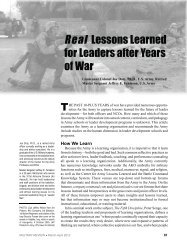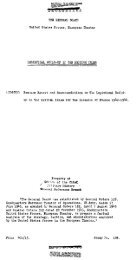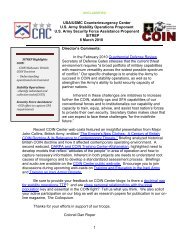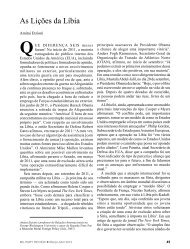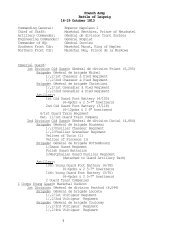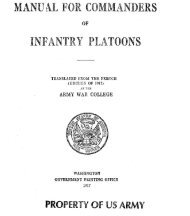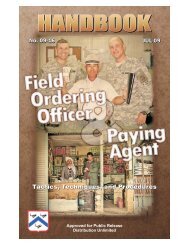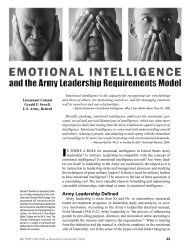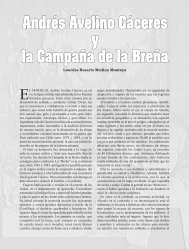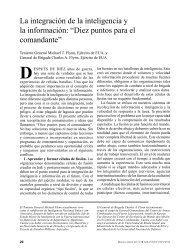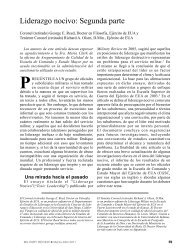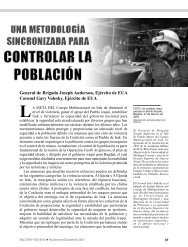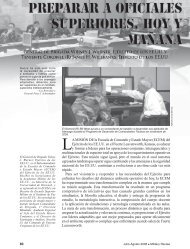Quartermaster Supply Operations - US Army Combined Arms Center ...
Quartermaster Supply Operations - US Army Combined Arms Center ...
Quartermaster Supply Operations - US Army Combined Arms Center ...
You also want an ePaper? Increase the reach of your titles
YUMPU automatically turns print PDFs into web optimized ePapers that Google loves.
SECTION 3<br />
WXRATIOM OF AFW C<strong>US</strong>S I1 AND ZV DE-3<br />
166. Mission. The &my Class I1 and IV depot, operated<br />
by the <strong>Quartermaster</strong> depot oonipany, supply, under the direc-<br />
tion and teohnical supervision of the army Class I1 and IV<br />
Zfioer,L2 wns ohsrged with the responsibility of carrying<br />
model stocks of supplies for a oertain nmber of troops for<br />
a eiven period of tine; to supply, Either directly or through<br />
distributing points, all troops assigned to tke depot for<br />
supply; and to receive, store and iesue additional BUppliW<br />
over and above model stock levels in order to fully utilize<br />
all storage foclllties.l3 The normal delivery of Class I1<br />
and IV supplies to the using units was elads at the <strong>Army</strong><br />
Class II and IV depot. Under unusual cjrcumstances, delivery<br />
was ma e to units if transportation faoilities were<br />
a~nllable.~4 During one phase of th6 Third <strong>US</strong> <strong>Army</strong>‘s operations,<br />
sub-depots were cstsblished for the pmpose of receiving,<br />
consolidating and forwarding to the main depot<br />
unit requisitions for supplies. The supplieo were trucked<br />
to the sub-dopots and issucd to the units at those points.<br />
167. Location of the Depot.<br />
a. The looation of Class II and IV depots p e<br />
oented Q problem throughout the continental cmpaign. 5-<br />
Factors considered in selecting a proper sitc included:l3<br />
(1) Type of terrain, drainage and accassi-<br />
bility.<br />
(2) Sufficient amount of open find closed<br />
storage,<br />
(3) TransportRtion f’acilities, rail Rnd road.<br />
(4) Security (dispersion and camouflage).<br />
(5) Layout plans, to include aisles ond roudways.<br />
b. Even should a Rite be found to meet a ll theae<br />
conditions, it was still unsatisfactory IS tt was not withln<br />
easy reach of the using units. The denot oompmy is not<br />
mobile without the attmhnent of addit?onal trucks, and tho<br />
low priority given to Class JI and IV eupplles Eade the move-<br />
ment of the depot difficult under the best of ciroumstances.<br />
During August and 98pteRber 19k.4, the round-trip distance<br />
between the combat troogs and the %raydepots amounted to FIS<br />
mucb as 360 uiles, and even then 50 perocnt of tbe unit trucks<br />
dispatc d to the depots were wasted beoause of lnodeciuate<br />
stockB,p3 In April 19C5, many arm depots were completely<br />
out of reach of the units that hed crossed the Bine. The<br />
units were utilizing their own avalluble transportation for<br />
Class I, IT1 and B supplies and round trips to the depots<br />
were as much as 500 miles.lb Bridge faoilities were also<br />
lnedequste at this time. On 31 March 1945 the <strong>Quartermaster</strong>,<br />
Beventh <strong>US</strong> <strong>Army</strong>, decided to move the army depot, starting<br />
with the immediate novement by truck of certain critical<br />
items. Transportation shortago, however, necessitated the<br />
use of slower rcil facilltles and the move was not completed<br />
until May, by which the the troops had mcved so far abeag<br />
thnt even at Its new location the depot was out of reach.<br />
- log -<br />
R-E-5-T-R-I- C-T-E -D



